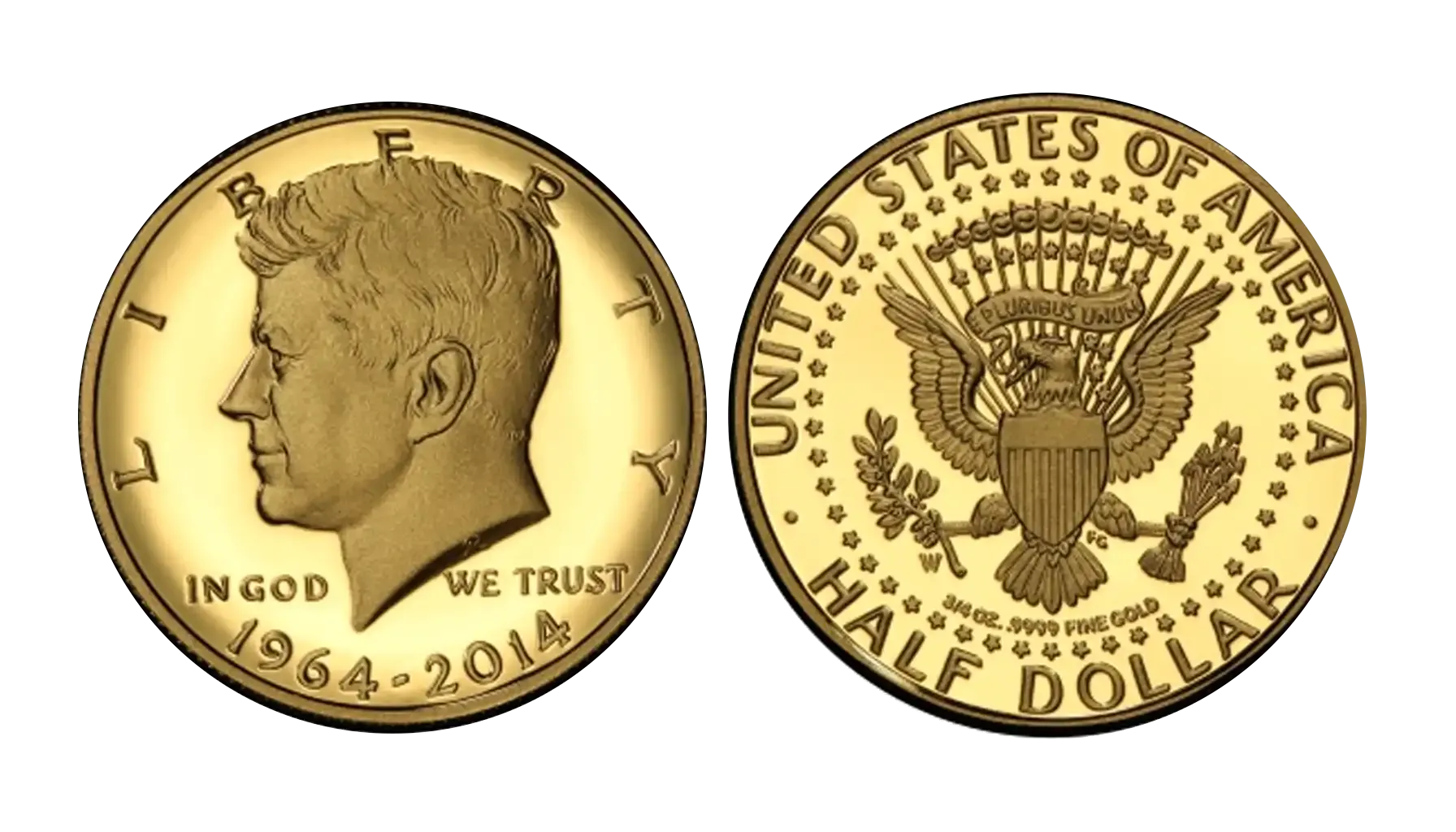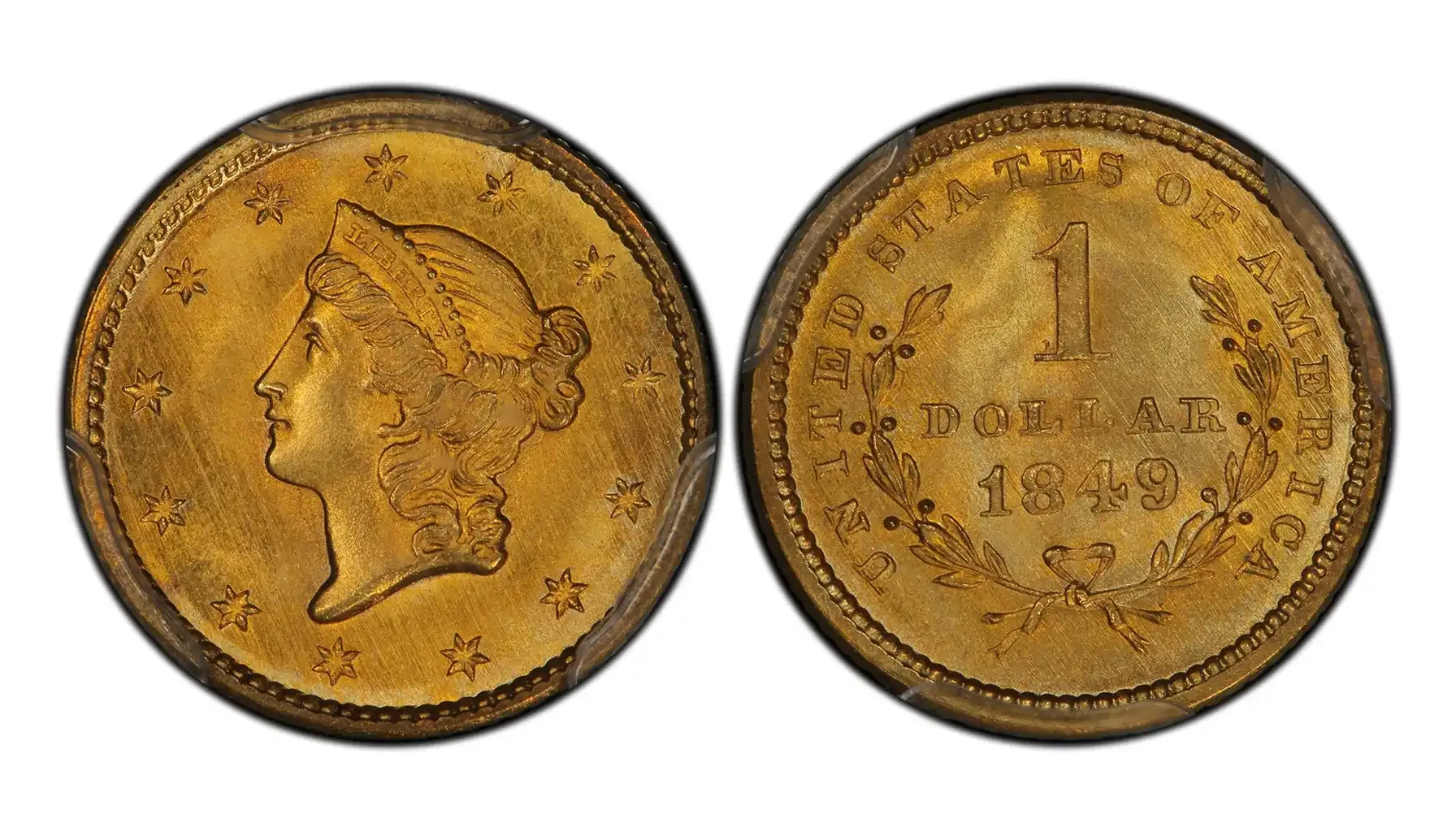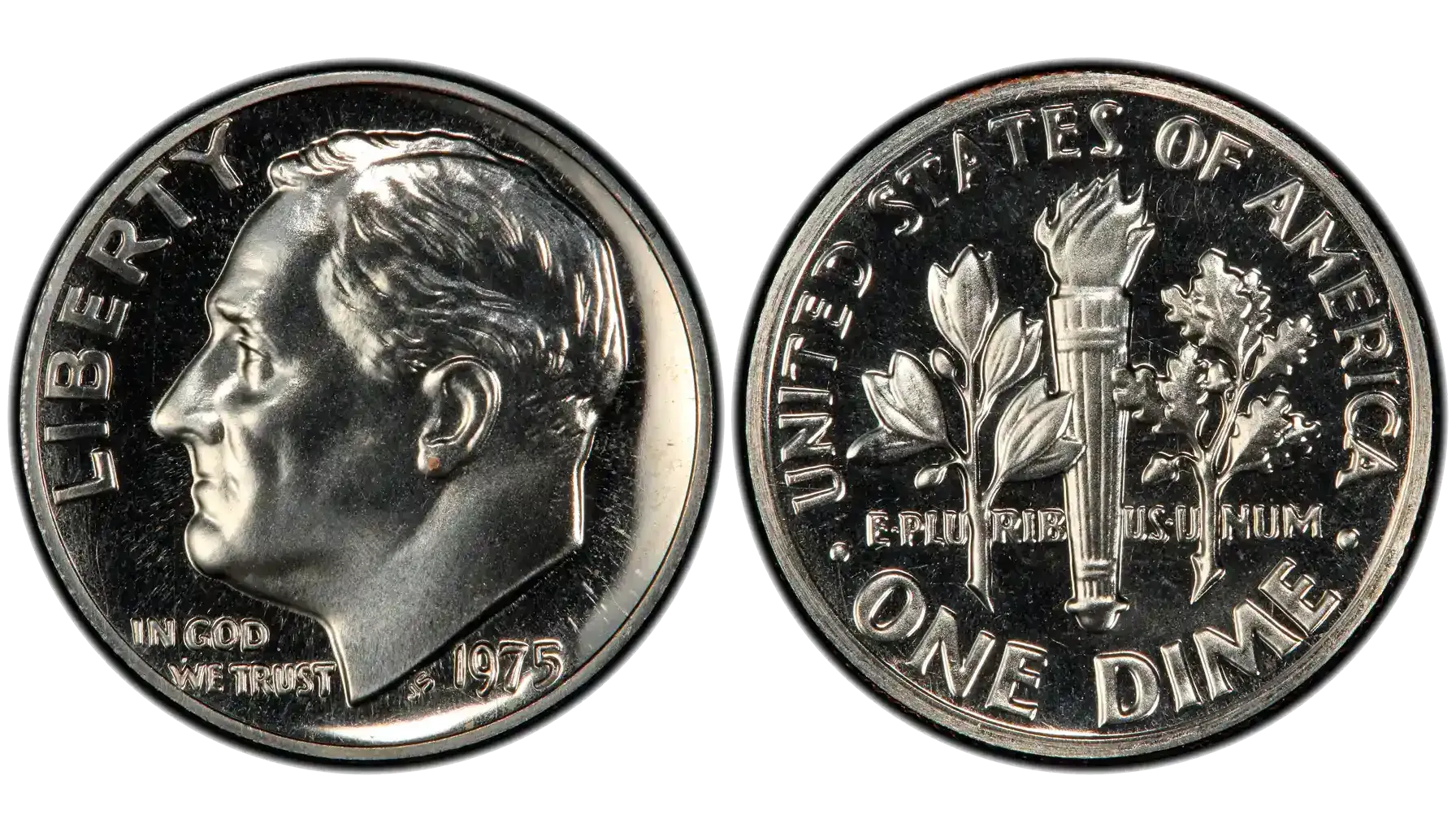Contents:
You won't believe it, we were just going through some old piggy banks and stumbled upon a bunch of 2001 quarters. You know, those with the different states on the back? And it hit us: some of them are actually worth more than just 25 cents!
Apparently, a lot of collectors and investors are actively searching for these coins, especially those in mint condition or with rare errors. They say some 2001 quarters, if you search for a 2001 quarter error list with pictures, can be worth quite a bit. And if you happen to find a proof set – that's a real jackpot.
So, if you have a 2001 quarter lying around, don't rush to spend it. In this article, we'll figure out how to identify coins, which states were released in 2001, and how much, say, a 2001 P New York quarter value" or quarters from Kentucky, Vermont, and other states might actually be worth.
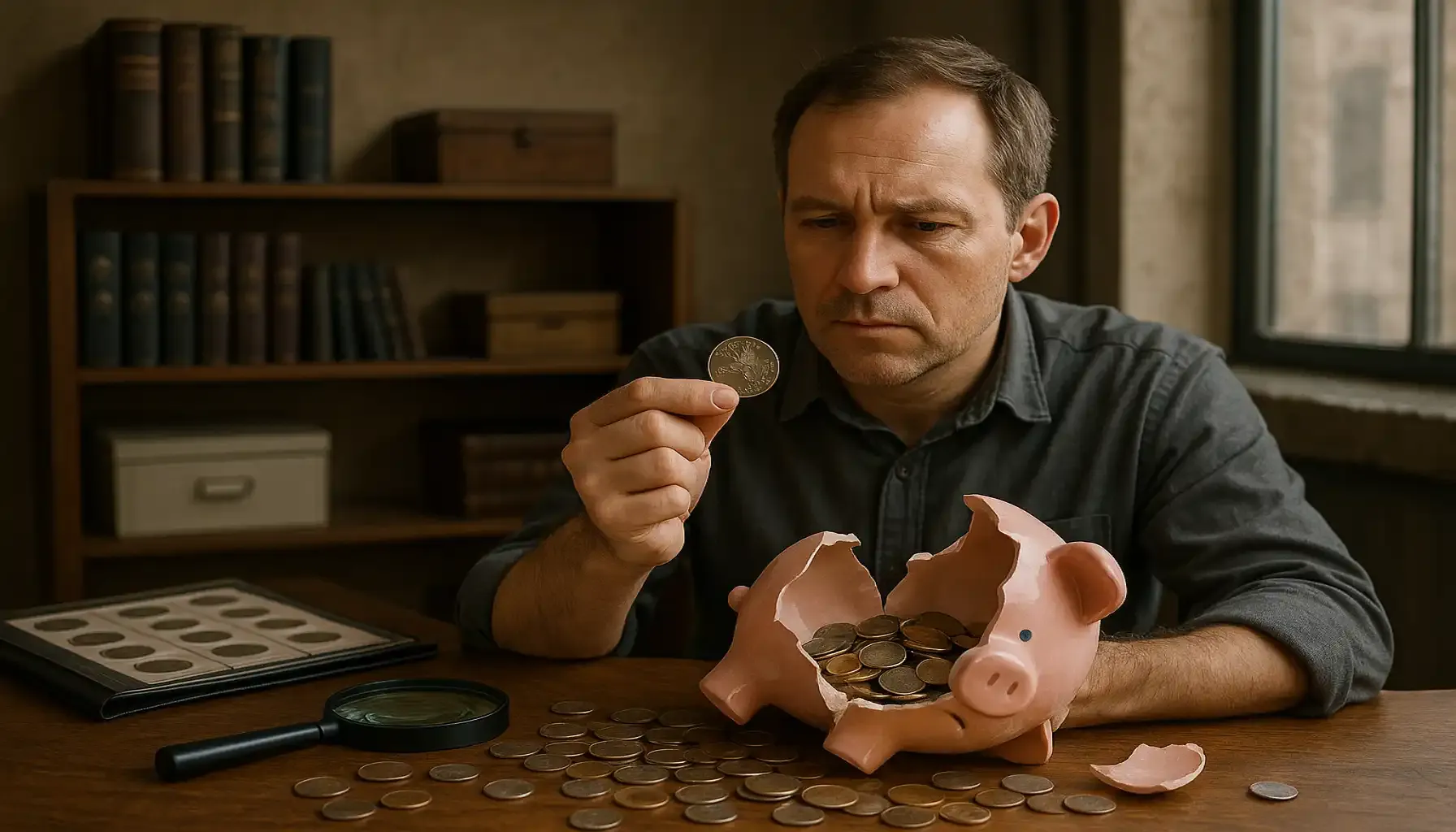
Quick Overview
A Little History | Back in 1999, the US Mint kicked off the 50 State Quarters Program, a super cool initiative to commemorate each state in the Union on its own quarter. Fast forward to 2001, and we're getting a new batch of state designs hitting our pockets! Each state had its own special quarter design launched that year. |
Design and Materials | These quarters are, as you probably know, made of copper and nickel. So, don't get too excited thinking you found a 2001 gold quarter value. The design usually features the state's official symbols or landmarks on the reverse side, and good ol' George Washington is still chilling on the obverse. Another thing to note is the New York 1788 quarter 2001 value, which is also important, so make sure to look for that. |
P and D Mints | Now, here's where it gets a little interesting. Each quarter was struck at either the Philadelphia Mint (marked with a "P" mint mark) or the Denver Mint (marked with a "D" mint mark). This affects the coin's value a little. We also have, for example, 2001 New York quarter D. This affects the coin's value a little. So, what's the 2001 P quarter value, you ask? We'll talk about it soon. |
The Value Proposition of 2001 State Designs
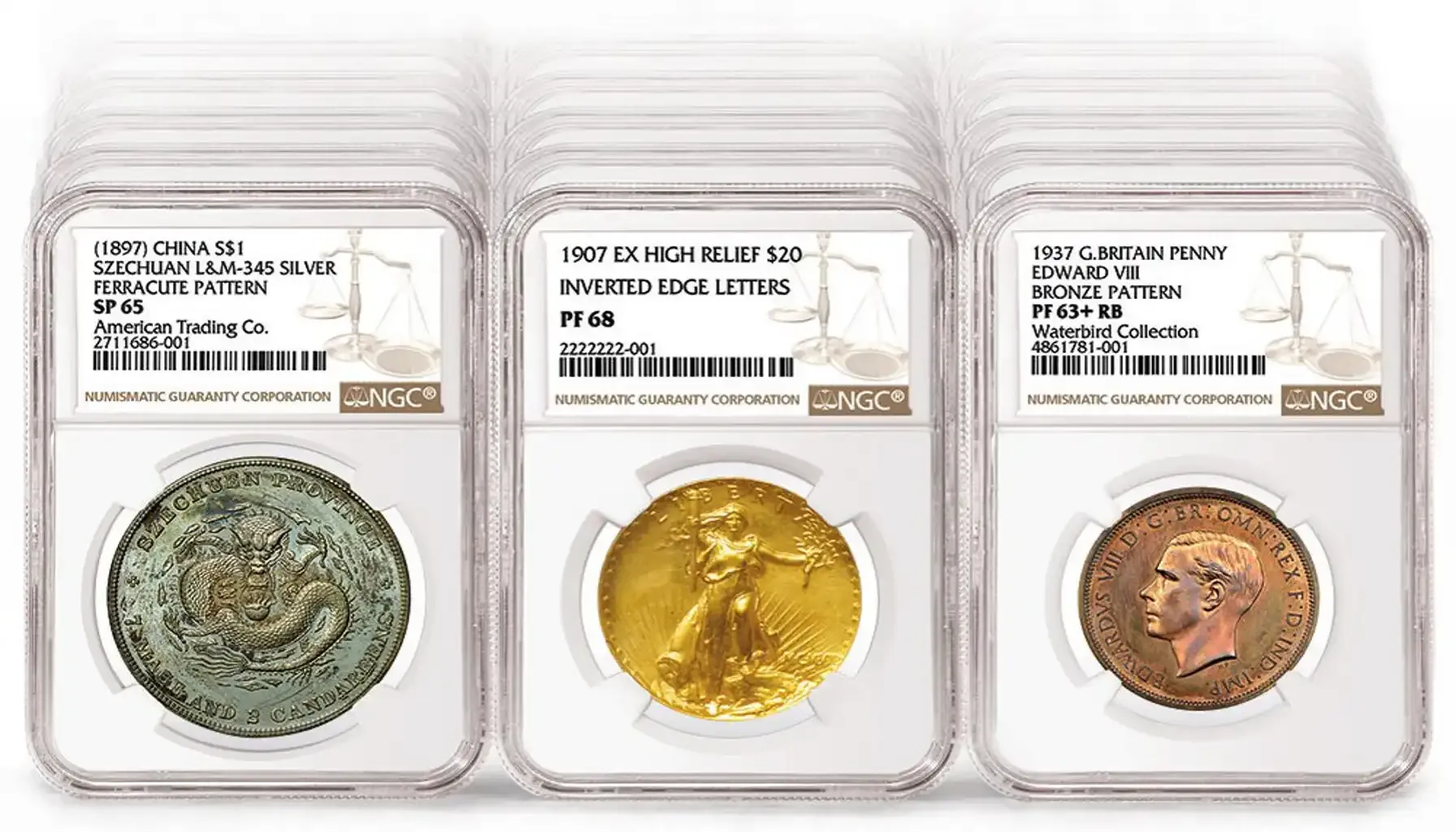
Why Do Values Fluctuate | ||
Condition | Mint Mark | Error Itself |
This is huge! The better the condition, the more valuable any piece of currency. | It affects its value. Even in similar conditions, an object with the D mint can fetch a slightly better price. | The rarity and visibility of the error. A slight doubling that requires a magnifying glass to see isn't going to be worth as much as a dramatic off-center strike. |
The Collector's Market and the Power of Rarity | ||
The numismatic market is driven by supply and demand, but also by a complex interplay of factors that create artificial scarcity and desire. | ||
Rarity | Demand | Certification |
The rarer it is, the more collectors are willing to pay. Obvious. | If collectors aren't actively seeking a particular design or error, even a genuinely rare object won't fetch a top price. | Having a piece graded and authenticated by a reputable NGC service. It can significantly increase its value. |
New York 2001 Quarter
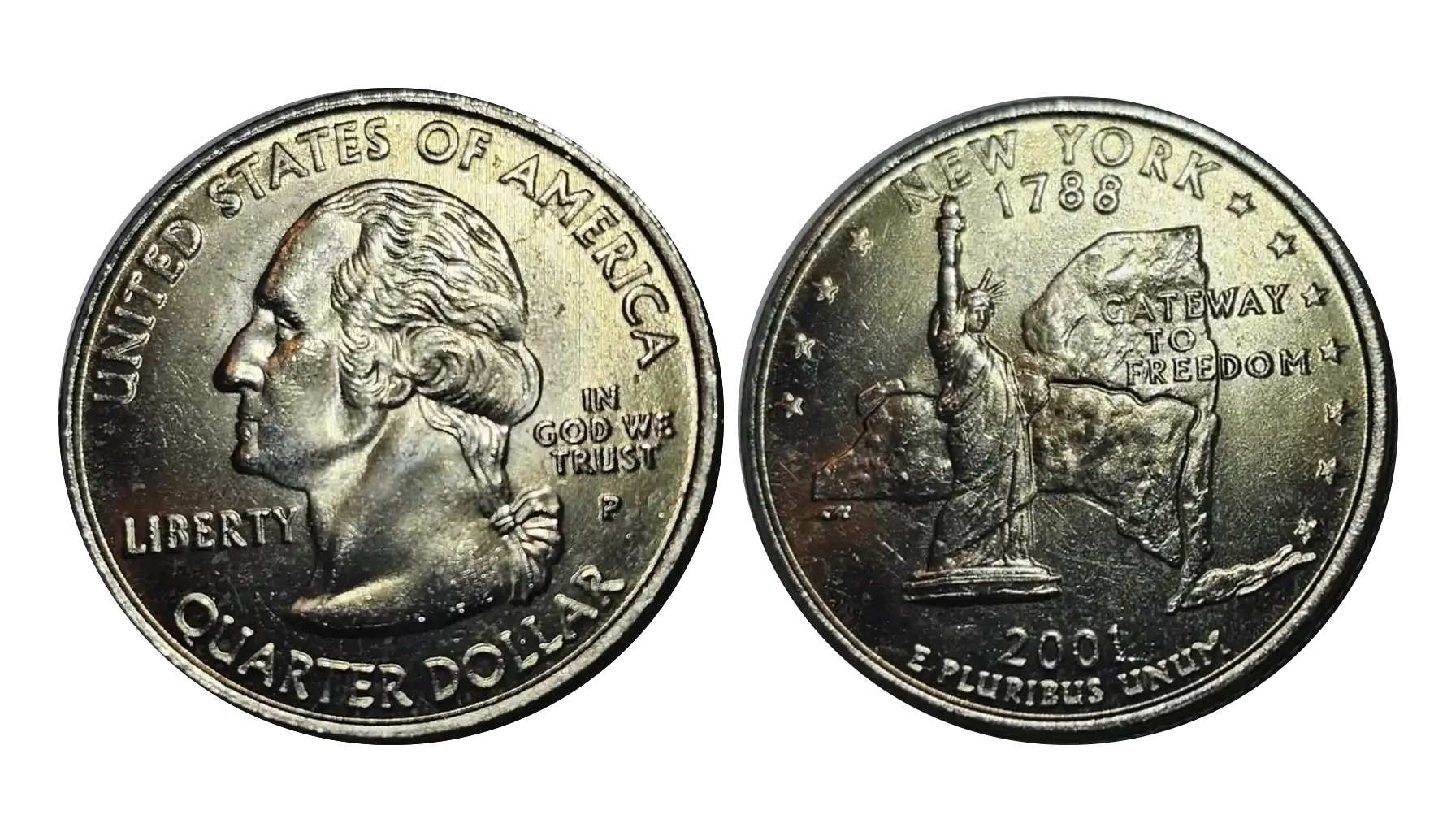
The general 2001 New York quarter value for a circulated coin isn't high. It's the potential errors that transform these quarters from pocket change to potentially valuable collectibles.
Knowing where your coin was minted is important, which means checking for that "P" or "D" mint mark. A 2001 New York quarter P tells you it came from Philadelphia.
While the potential 2001 D New York quarter value is affected by factors such as its state of preservation.
Errors and Variations
If you have a 2001 New York state quarter, grab a magnifying glass and a good light source, because it's time to become a coin detective.
Here's a breakdown of the types of 2001 New York quarter errors to look for, and how they impact the potential 2001 P New York quarter error value:
Doubled Die
This is one of the most sought-after types of errors.
A doubled die occurs when the die has a doubled or misaligned impression.
Look closely at the inscriptions on the coin, like "United States of America" or "New York 1788".
A noticeable doubling, particularly on prominent features, can significantly increase value.
How to spot | Look for distinct "shadowing" or a blurred appearance on the letters and numbers. |
Value Impact | Depending on the severity and location, a doubled die quarter can be worth anywhere from a few dollars to hundreds of dollars. |
Off-Center Strike
This occurs when the coin isn't properly centered during the striking process.
As a result, the design is shifted, and a portion of the blank planchet is visible.
How to spot | Look for an uneven border around the design. Part of the coin will be missing the design entirely. |
Value Impact | The more off-center the strike is, the higher the value. Severely off-center strikes are particularly desirable. |
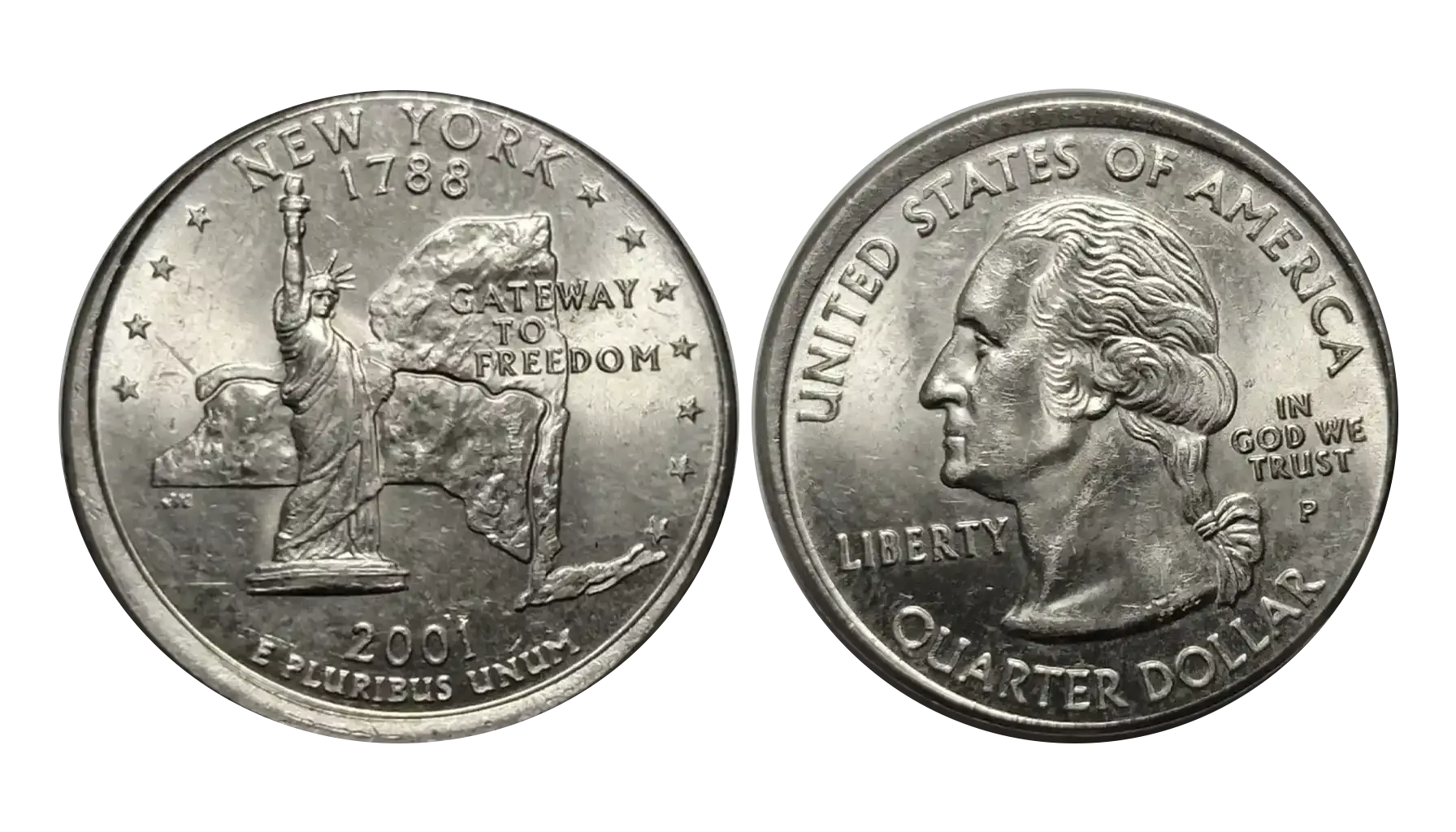
Clipped Planchet
This happens when the metal blank has a piece missing before it's struck.
This results in a crescent-shaped area missing from the coin.
How to spot | Look for a smooth, curved "bite" taken out of the edge of the coin. |
Value Impact | A well-defined clipped planchet can add a significant premium to the coin's value. |
Lamination Errors
These occur when layers of the metal separate, creating a peeling or flaking effect on the coin's surface.
How to spot | Look for raised areas, rough textures, or areas where the metal seems to be peeling away. |
Value Impact | The more dramatic the lamination error, the more valuable the coin will be. |
Die Cracks/Breaks
Over time, the dies used to strike coins can develop cracks or breaks.
These cracks will appear as raised lines on the surface of the coin.
How to spot | Look for thin, raised lines running across the design. |
Value Impact | Die cracks are generally less valuable than other types of errors, but a quarter with a very prominent or extensive die crack can still command a premium. |
The Tip
The best way to determine the actual value of your error quarter is to consult with a professional coin appraiser, send it to a reputable grading service (like PCGS or NGC) for authentication and grading or use special coin ID mobile applications.
A graded and certified error coin will always be more valuable than an ungraded one.
Vermont 2001 Quarter
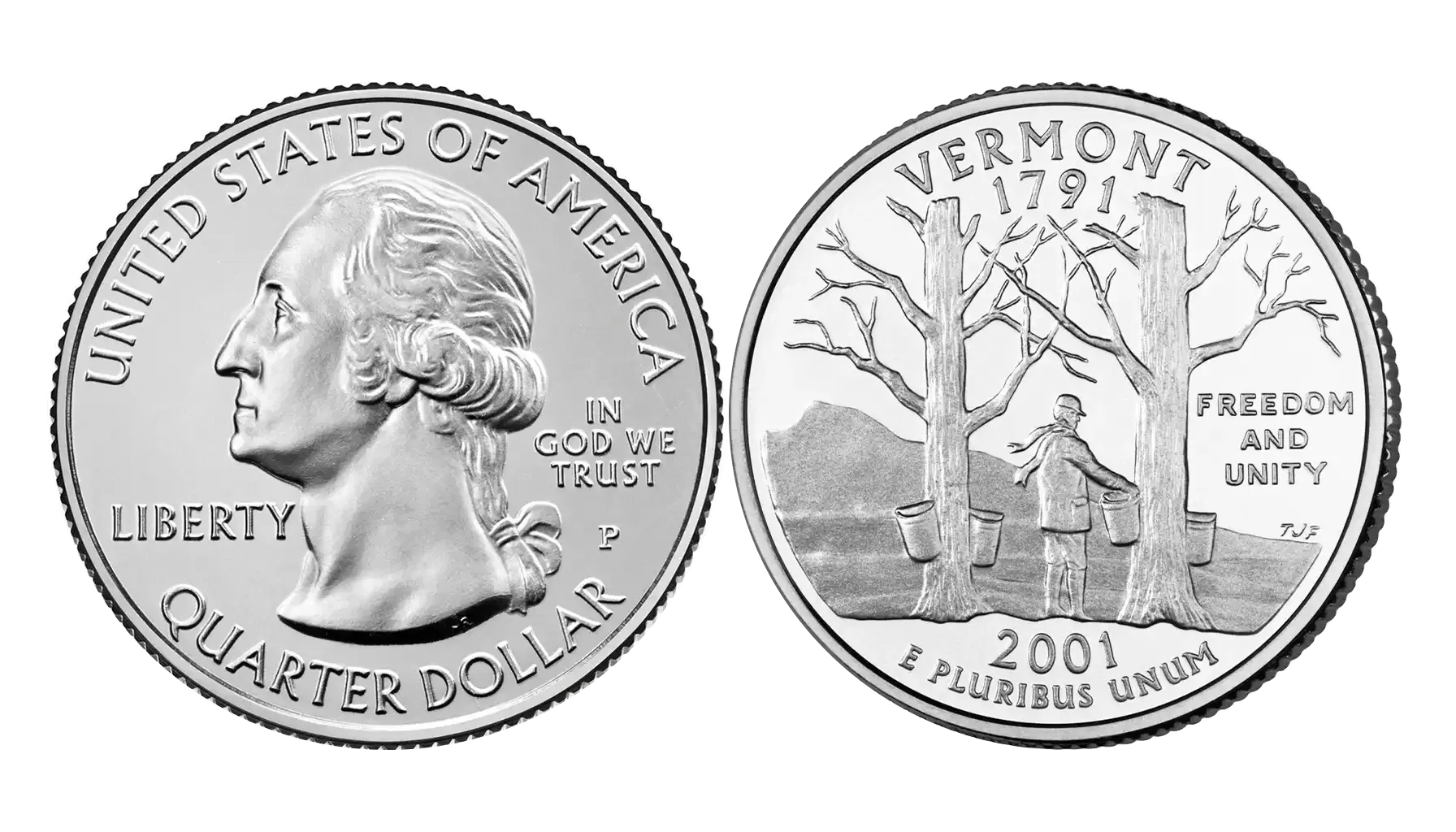
So now you have the Vermont 2001 quarter value on your mind, right? Similar to the New York Quarter, the value of a circulated Vermont quarter is generally close to its face value – 25 cents.
The Vermont quarter features a Morgan horse, a maple tree, and a bucket used for collecting maple sap. Any error that significantly distorts or affects these specific design elements is more likely to catch a collector's eye.
Where to Focus
Morgan Horse | Pay close attention to the horse! Is there any doubling on its legs, mane, or tail? Doubling on a prominent feature like the horse is a big plus. Check for a strange line, or additional detail near or on the horse itself. |
Maple Tree & Bucket | Examine the maple tree's leaves and branches, and the maple sap bucket. Doubling in these smaller details, while harder to spot, can still be valuable, and less frequent to find. |
Inscriptions | "Vermont 1791," "Freedom and Unity" – these are prime spots for doubled dies. Use a magnifying glass and good lighting. |
Specific Errors
Imagine a Doubled Die where the horse's leg is clearly doubled. This would be a more desirable error than, say, a minor doubling on a less noticeable part of the design.
An off-center strike that cuts off part of the horse would also be a more dramatic and valuable error.
The 2001 Vermont quarter errors that are unique to the Vermont design are what you are hunting for. By understanding the design elements and common error types, you'll increase your chances of finding that rare, valuable Vermont.
Kentucky 2001 Quarter
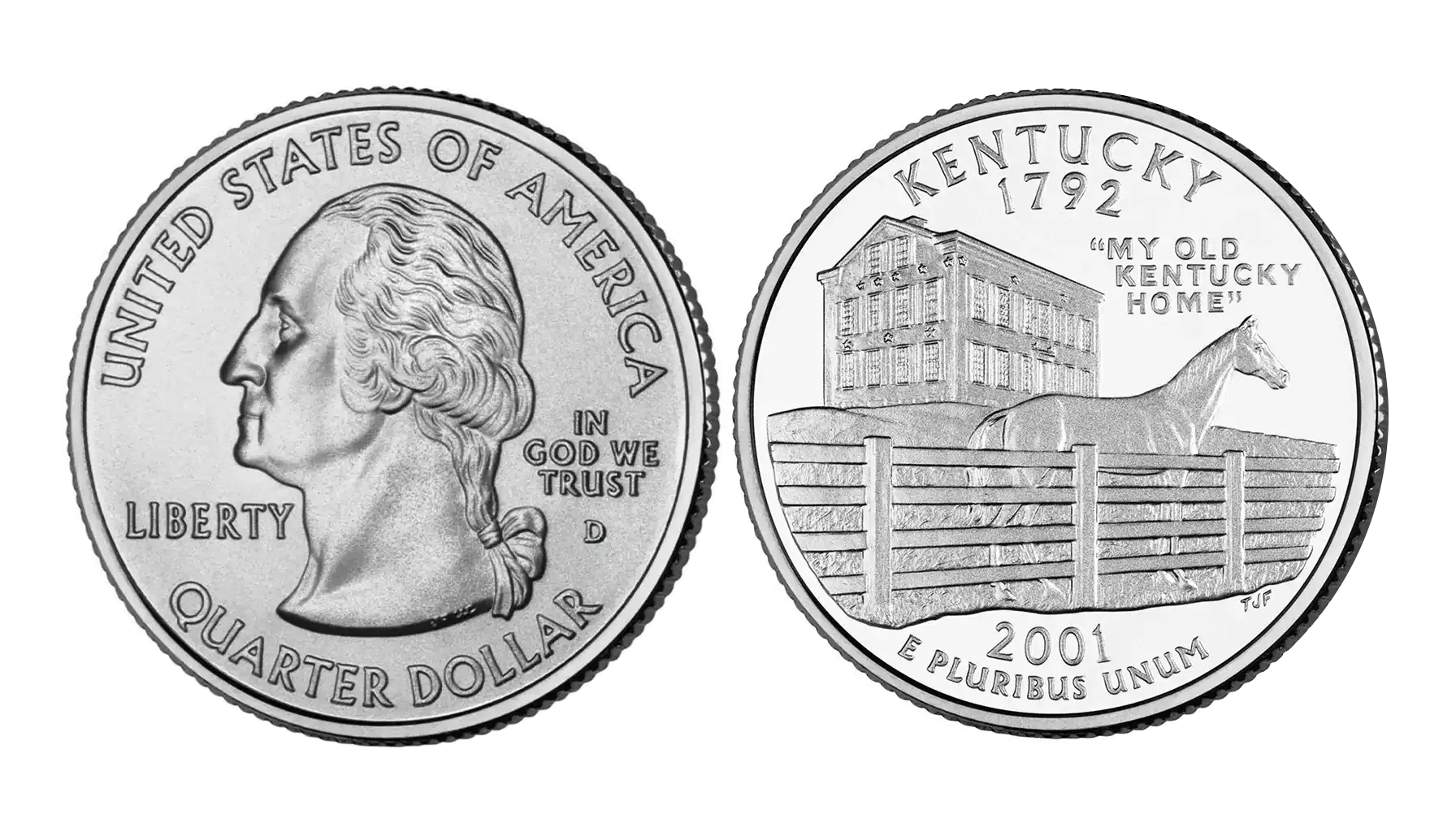
Let's be honest, the standard 2001 Kentucky quarter value for a circulated coin is around 25 cents. We're on the hunt for the exceptions.
This quarter depicts a thoroughbred horse galloping in front of a fence, with Federal Hill (My Old Kentucky Home) in the background.
Error Analysis
Thoroughbred Horse | |
Doubled Die | Off-Center Strike |
Examine the horse's legs, mane, tail, and even its muscles for any signs of doubling. This is a prime area for potential doubled die errors. A very noticeable doubling is what is going to make a difference. | An off-center strike that clips part of the horse's body would be more visually dramatic and potentially valuable. |
Fence | |
Federal Hill | Look for any anomalies |
While less prominent, any errors affecting the building itself, such as a doubled outline or a distortion of the structure, should be noted. A less likely spot, but it can happen. | You never know what you'll find. |
A 2001 Kentucky quarter error affecting the horse, the most prominent design element, is likely to be the most desirable and, therefore, the most valuable.
North Carolina 2001 Quarter
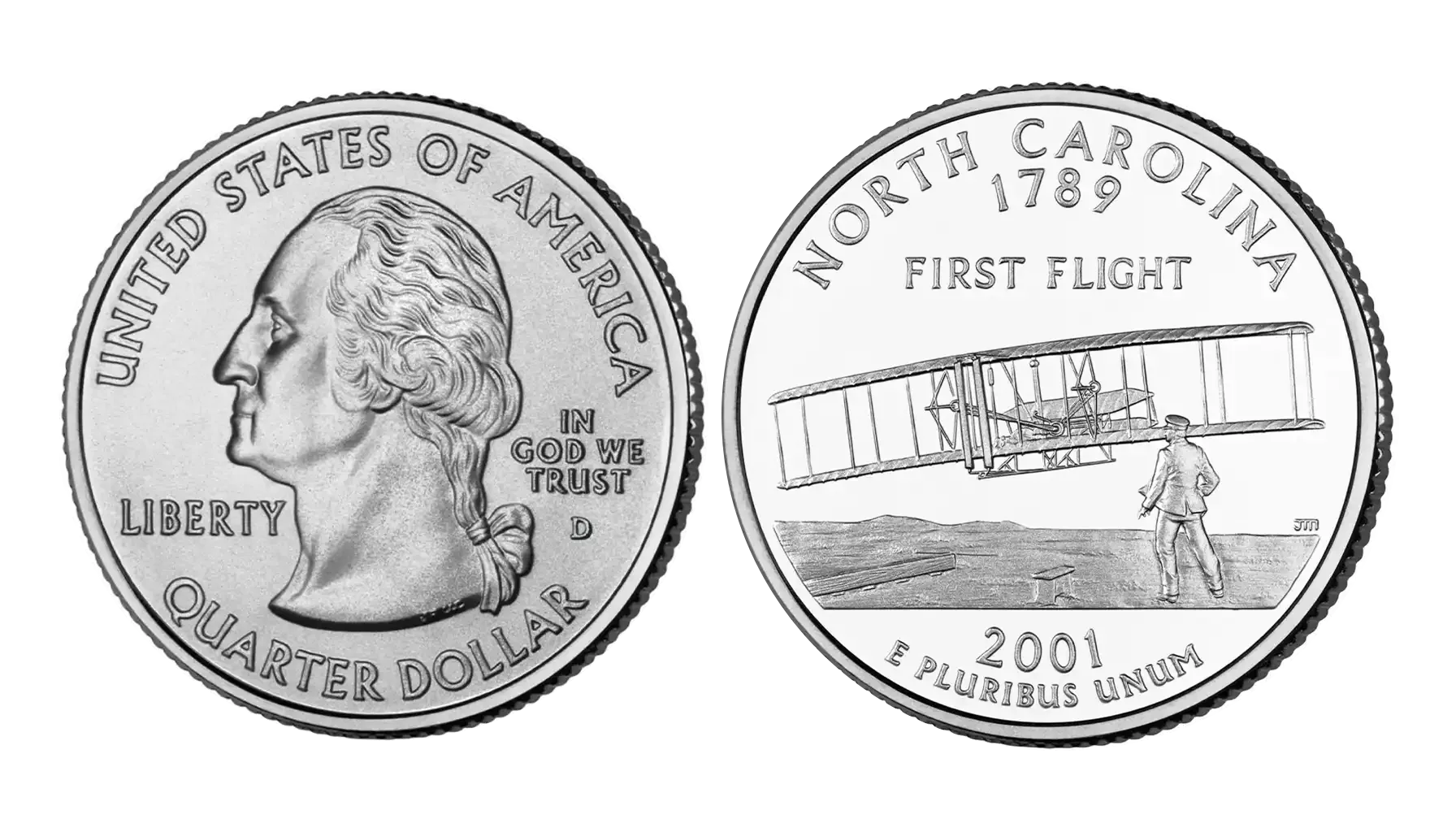
As with the other state quarters, a circulated North Carolina will typically only be worth its face value (25 cents).
The design showcases the Wright brothers' first successful flight at Kitty Hawk, the state outline, and the motto "First Flight".
Potential Errors
Wright Brothers' Airplane | |
Doubled Die | Off-Center Strike |
This is the prime target for error hunting! Examine the wings, tail, and fuselage of the airplane for any signs of doubling. A clear, noticeable doubled die on the airplane would significantly increase the coin's value. Look to see if it says first flight twice on the coin. | An off-center strike that clips part of the airplane would create a dramatic visual error. |
State Outline | |
Although less likely to be a significant error, carefully inspect the outline of North Carolina for any unusual distortions or breaks. If you find any you may have a very unique error. | The Inscription "First Flight" |
Examine if there is any doubling of the text. | |
To really find a 2001 North Carolina quarter error, make sure to know the unique identifiers of this coin.
Rhode Island 2001 Quarter
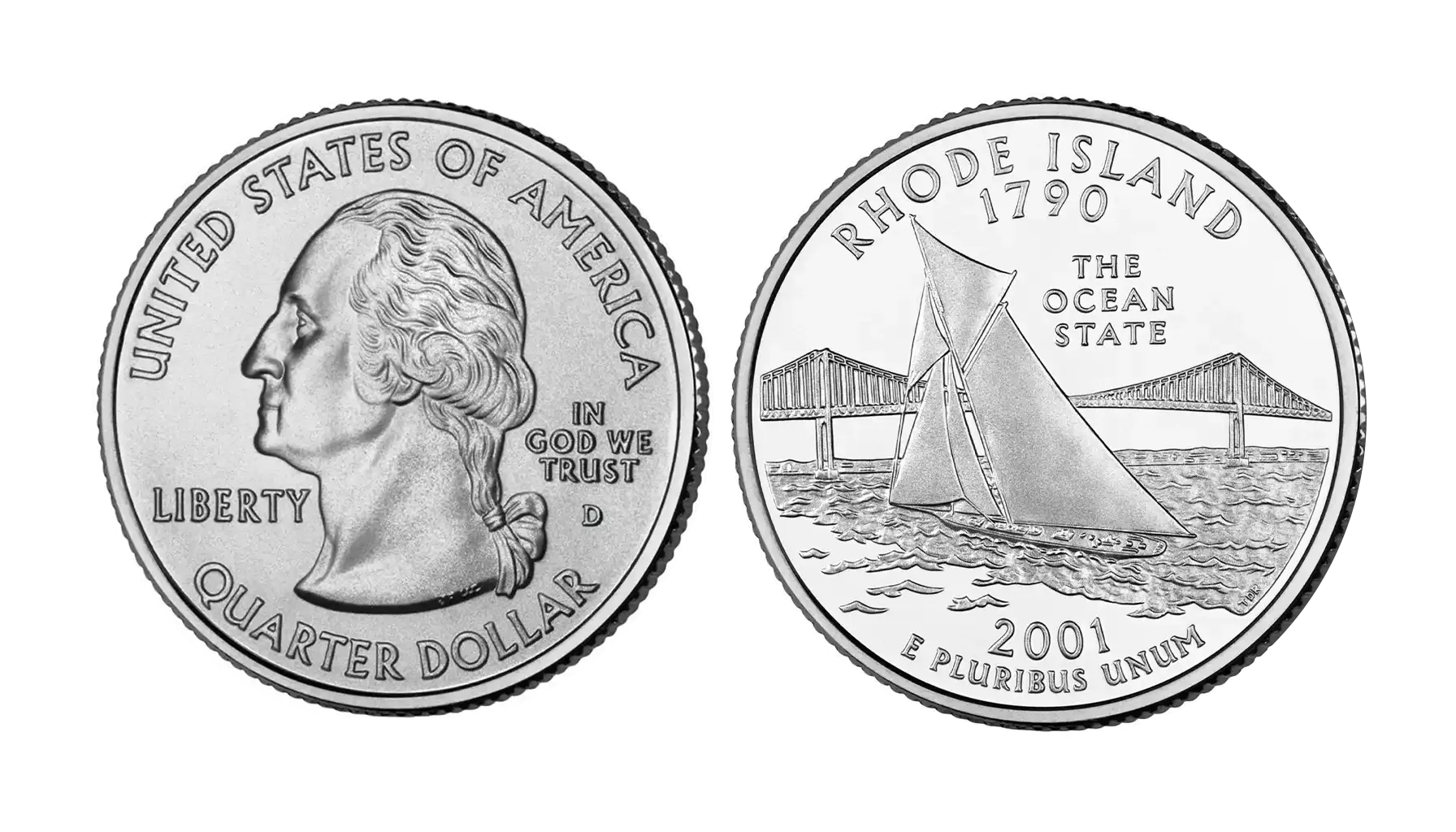
A circulated Rhode Island 2001 quarter isn't going to make you rich.
Like most common coins, it will be worth around 25 cents.
BUT! With a magnifying glass, a keen eye, and this guide, you might discover something special.
Unique Features and Errors
The design of this quarter centers around Rhode Island's maritime heritage, featuring a sailboat sailing in Narragansett Bay, the Claiborne Pell Bridge (Newport Bridge) spanning the horizon, and the state outline.
The Sailboat | |||||
This is the focal point of the design, and therefore a prime area to look for errors. | |||||
Doubled Die | Examine the sails, hull, and rigging of the sailboat for any signs of doubling. A doubled sail, especially if it's a clear and prominent doubling, could significantly increase the value of the coin. | Inconsistencies: Check the waves and the position of the ship. Does it look right or is there something wrong? | |||
The Claiborne Pell Bridge (Newport Bridge) | |||||
The graceful arc of the Pell Bridge is another area to scrutinize. | |||||
Distorted or Misaligned Bridge | Look for any signs that the bridge is distorted, misaligned, or has doubled lines. Any significant error affecting this prominent structure would be highly desirable to collectors. See how the bridge connects and any weird lines that may not belong. | ||||
Narragansett Bay | Carefully examine the water surrounding the sailboat and bridge. Look for inconsistencies. | ||||

